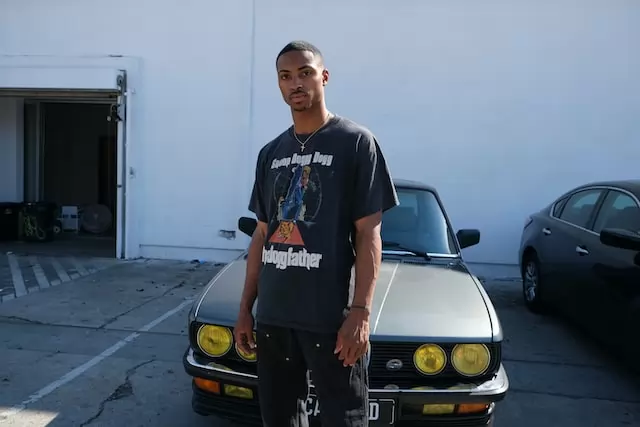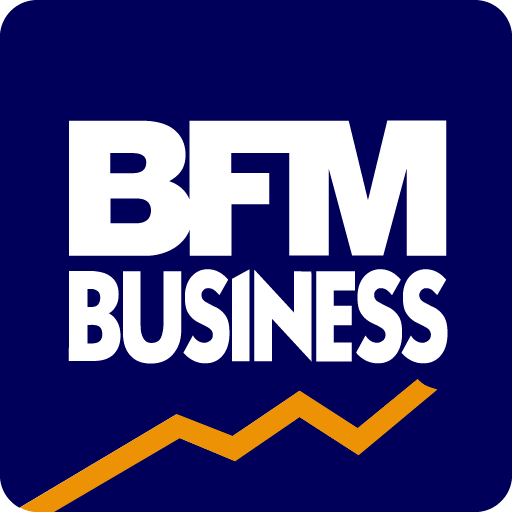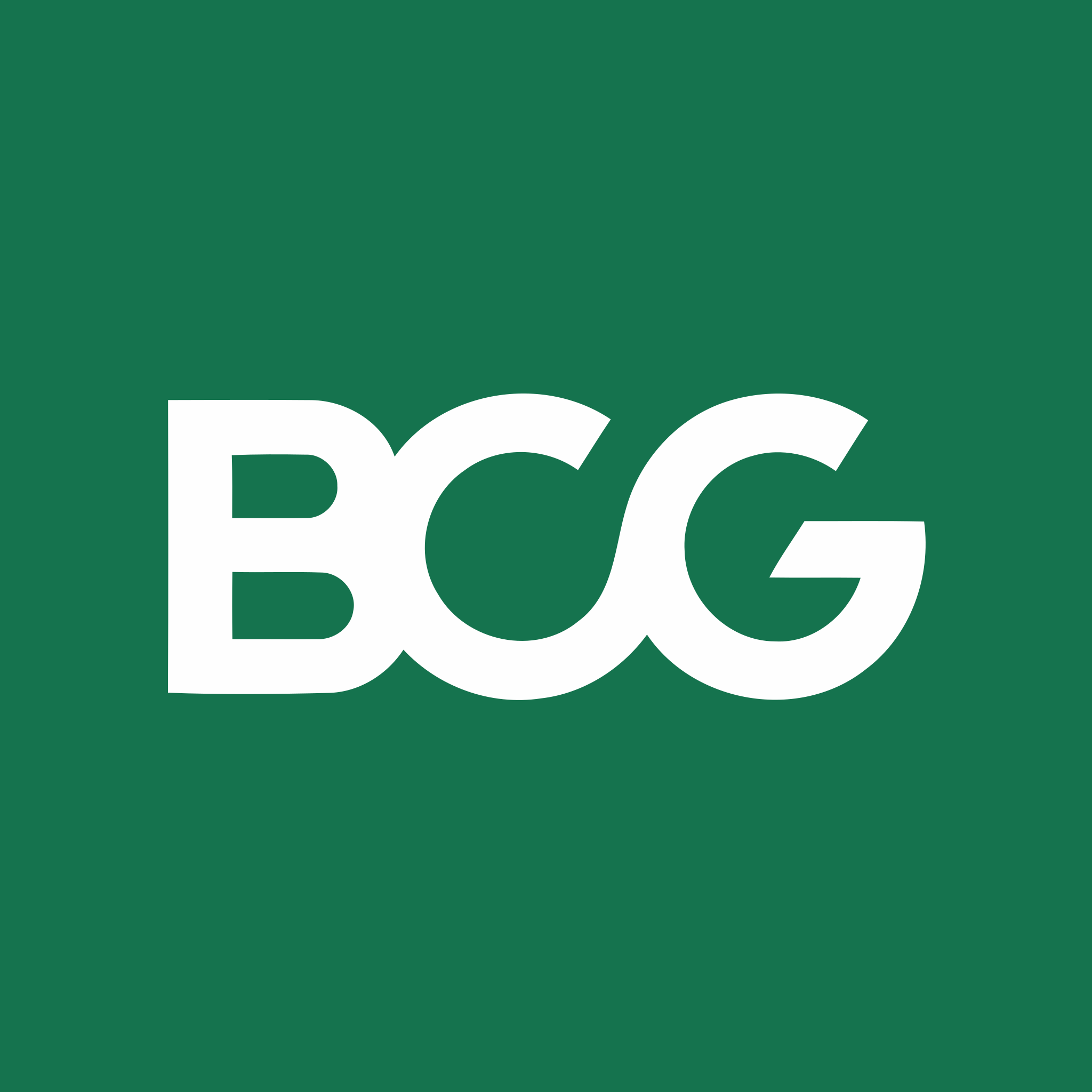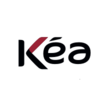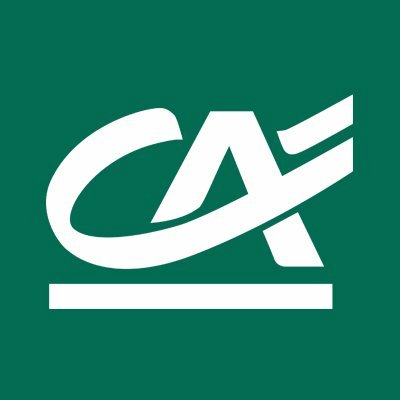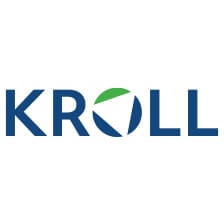Summary of our market study
The French market for sportswear is estimated at 11 billion euros.
The global sportswear market slowed significantly during the health crisis, shrinking to $160 billion.
It also led to an increase in demand for comfortable, athleisure-style clothing
The market is worth around $250 billion?
The market share of sportswear is 24%.
The United States is the largest market, with $73 billion.
The sportswear segment encompasses footwear, apparel and accessories.
The French sportswear market
More than half of the French population, especially those aged 16 to 24, have adopted sportswear not only for sporting purposes, but also as everyday fashion items.
Despite the rise of digital media, multi-brand retailers are the preferred choice of French consumers for athletic sportswear, accounting for over 50% of the market.
Between 15% and 20% of purchasing decisions are influenced by online channels.
The "Gorpcore" trend, which combines outdoor gear with everyday fashion, has particularly taken hold among the fashion and streetwear communities.
Consumers are increasingly turning to eco-friendly products. Sustainability is increasingly expected of sportswear brands.
Players in the French sportswear market
- Nike: One of the giants of the sportswear industry.
- Adidas: Nike's permanent rival.
- Lacoste: A high-profile entry into the luxury sector, Lacoste has infused sportswear with a touch of class and exclusivity.
- Under Armour: Another major brand in the technical and athletic segment.
- Decathlon and Intersport: In France, multi-sport stores such as Decathlon and Intersport are popular for sportswear.
- Salomon, Arc'teryx and Oakley: These brands are particularly popular.
to understand this market
Detailed content of our market study
 Inforamtion
Inforamtion
- Number of pages : 35 pages
- Format : Digital and PDF versions
- Last update :
 Summary and extracts
Summary and extracts
1 Market overview
1.1 Introduction and market scope
Strictly speaking, sportswear refers toall clothing designed to be worn while practicing a sport. From a less Manichean point of view, it's clothing for men or women made up of distinct pieces, such as jackets, pants, sweaters, skirts and shirts, which are casual in style and can be worn on their own or in various combinations for informal activities. Sportswear has always played in two categories, offering both products for sporting activities and products that are comfortable and easy to wear on a daily basis. If one in two French people prefers to feel comfortable in their clothes before looking at their look, it's because in recent years, at work or in the city, attitudes have changed.
The latest report 'Global Sportswear Market to 2025 with COVID-19 Impact Analysis' by GlobalData reveals thata quarter of all clothing sold in the first year of the pandemic (2020) was made up of "sportswear" items. While the share of sportswear is expected to fall slightly this year as consumers opt for dressier items, the return to pre-pandemic norms will not be as noticeable for the professional wardrobe. Sportswear's share of the apparel market is expected to reach 23.6% by 2025.
The COVID-19 crisis has had a major impact on this market. Naturally,French consumers shifted their purchases to essential goods, partly due to the closure of various stores, and partly due to a loss of interest in the clothing sector. But paradoxically, successive confinements have created a vast demand for more comfortable clothing, and the 'athleisure' style - sophisticated segment of sportswear - has boomed. Another analysis is that the French returned to sport during the crisis, boosting demand for sports equipment, which belongs to the sportswear segment.
As a result, sportswear is now an essential part of the French wardrobe, and the fashion and luxury sectors have grasped the importance of this trend. Examples include Salomon, Arcter'yx and Oakley, all of which are very popular with fashion-conscious customers in France and Europe.
1.2 A global market finally recovering from the health crisis
Global sportswear market size
The global sportswear market size was $***.** billion in ****. The market suffered a huge drop of over **.*% between **** and **** due to the health crisis. However, due to a growing interest in sporting activities and the adoption of a more casual style of dress, this market is regaining its credentials and is expected to grow at a CAGR of *.*% per year to ****. As shown in the graph below, this market should reach $***.** billion by ****.
Estimated size of the global sportswear market World, ****-****, billions of dollars Source: ****
Structural changes have contributed to the market's recovery:
Many schools are making sports compulsory from an early age There is a real movement towards sports such as trekking and climbing Rising medical costs are prompting people to take up sport to stay healthy.
Global production in the sportswear market
The global sportswear market is divided into two production segments:sports footwear on the one hand, and apparel on the other. The diagram below shows the evolution of production of these different products, based on the results of Adidas, one of the sector's leaders. (***)
Evolution of the global quantity produced by the Adidas Group, in sportswear and footwear World, ****-****(***), million units Source: ...
1.3 Global trends and market opportunities
We've taken a look at some of the global trends for the sportswear market up to ****. Mckinsey's'The State of Fashion ****' report shows us the major revolution taking place in the materials used, likely to increase the links between the sports, research and technology sectors. [***]
New, ever more innovative and practice-oriented materials
In the field of e-textiles, researchers are using *D printing to manufacture materials capable of harvesting and storing electricity. Japanese company Xenoma has gone one step further, developing an "electronic skin" that monitors shape and health using printed circuit fabric technology. This type of technology is likely to form the basis of the next generation of sportswear. The global market for smart textiles is expected to grow from $** billion to $*** billion by ****.
Innovations driven by startups
Several players, such as Asics, also support start-ups through reward programs and gas pedals. TheFibres and Textiles Manufacturing Innovation Institute, supported by the US Department of Defense, is looking for new technologies to impregnate fibers and wires for integrated circuits, LEDs, solar cells and other capabilities. In the coming year, they expect to see increased collaboration between start-ups, fiber companies, manufacturers, fashion brands and retailers. [***]
An industry that aims and must aim for ...
1.4 A French market in the post-Covid fray
The French sportswear market is struggling to recover its pre-Covid-** level. In contrast to other essential sectors, where the rebound was driven by strong demand from the French, the textile sector, and sportswear in particular, has no longer become a priority for the French consumer. As a result, the graph below highlights the industry's marked lag, as it struggles to return to its pre-crisis level(***)
Sales of sportswear and sporting goods in France in ****
To produce this graph, we used the Naf **.** code on the INSEE website. This gave us a sales figure for ****, with a base *** index of *.** billion euros. By averaging the monthly indices over the year, we were able to calculate the evolution of sales, year on year.
Size of the French sportswear market (***) France, ****-****, billions of euros Source: ****
In detail, sales of sports footwear jumped **% year-on-year. The trend is similar in textiles (***). Nevertheless, the shock of **** will have been unprecedented, particularlyfor department stores, which will have lost almost **.*% in revenues compared with ****. [***]
Fortunately, online sales will have been a real growth driver in ****. More fundamentally, the French have shown an astonishing ability to adapt and a desire to consume in a context that is not very ...
1.5 French foreign trade in sportswear
In this section, we have used the UNcomtrade database database to estimate French foreign trade. As the site does not contain references solely dedicated to sportswear, we have analyzed and grouped together * categories in order to come as close as possible to the reality of the market. Consequently, we used the following * codes:
******: 'Sports footwear; tennis shoes ****** :'clothing accessories; gloves, mittens and mitts, specially for use in sports' ****** :'clothing accessories; gloves mittens and mitts composition leather'
France's position in European sportswear trade
Value of exports and imports from Europe's leading sportswear countries Europe, ****, millions of euros Source: ****
The above chart shows that France is in *rd position in Europe. It has to be said that it competes more with the Netherlands and Spain than with Italy and Germany. Thus, in ****, the total value of French sportswear exports will amount to *.* billion euros, and imports to *.* billion euros.
Value of sports footwear exports and imports between **** and ****
Trend in the value of exports and imports between France and the rest of the world (***) Fracnce, ****-****, millions of euros Source: ****
France is a predominantly importing country. There are several reasons for this:
Strong domestic demand Very powerful global players Lower production capacity ...
2 Demand analysis
2.1 Typology of French sportswear buyers
Sportswear consumption by age
More than one in two French people, in their everyday lives, bypasses the use of items originally intended for sport to turn them into fashion items(***) and Ipsos. The **-** age group is even more concerned by this attitude, with **% declaring that they dress in this way.
To give an order of magnitude, millenials visit Zara an average of *.* times a year , spending €** per visit[***]
Breakdown of sportswear consumption by age France, ****, % Source: ****
2.2 Consumption criteria and choices: a very marked before/after crisis
Successive crises have not finished changing French consumer habits. The health crisis and the forced closure of retail outlets have had an unprecedented impact on consumption volumes.
In ****, the volume of clothing purchased on the French market fell by **%. In ****, the improvement observed was not sufficient to surpass **** consumption levels, as quantity purchases remained *% lower than in ****[***]
The benefits of sportswear consumption
Depending on the type of item, formal clothing for both women and men lost ground, with falls of ** to **% for raincoats or coats. In some cases, the declines were even more pronounced for women's suits. On the other hand, dresses, men's T-shirts and sweatshirts are on the upswing, revealing the intensification of the "casualization of outfits", which was further reinforced during the health crisis.
Why do the French wear sportswear? France, ****, % Source: ****
Influences that drive French consumption
Store windows are consumers' *st source of inspiration for their sportswear purchases, ahead of friends and family and the street. It also highlights the fact that multisport stores are the preferred place for French people to buy a product with a sporty purpose. (***), but they are clearly outstripped by general fashion retailers.
What are your influences when buying sportswear? France, ****, % Source: ****
The ...
2.3 The sportswear market is driven by the explosion of e-commerce and online sales
A veritable savior of the market during the crisis, and a veritable vector of revolution for the fashion sector over the past ** years, e-commerce and online sales platforms have done the French sportswear sector a world of good.
In fact, according to Fevad, **.*% of Internet users will have bought a fashion or clothing product on the Internet in ****. What's more, the growth in fashion sales is undeniable, especially after the health crisis and the Covid-** pandemic. According to IFM Panel data, online sales of clothing and textiles jumped by **.*% in ****, up from *.*% in ****, to reach **.*% in ****. In value terms, this growth between **** and **** represents **.* billion euros . [***]
So, post-Covid, the French have bought many product categories online. As the diagram below shows, the majority of their purchases concern non-food products: fashion and clothing (***). The average transaction amount has also risen, after eight consecutive years of decline, and now stands at ** euros, up *.*% on ****.
Fashion and Internet users
Positioning of the Fashion and Clothing sector in the share of products and services purchased as a percentage of Internet users France, ****, % of Internet users Source: ****
Leaders and the Internet
Competition is also fierce on the Internet. Although **.* million French people have already purchased sporting ...
2.4 A polluting industry in search of eco-responsibility
The fashion industry in general is notorious for its unsustainable impact on the environment. After agriculture, fashion ranks as the second most polluting industry, accounting for *% of greenhouse gas emissions in **** according to McKinsey's "Fashion on Climate" report. Unfortunately, the sportswear category is one of the most polluting. This exploding trend market is predicted to experience meteoric growth, which will not help meet the objectives of the Paris Accords signed in ****.
In ****, the footwear market was responsible for *% of global carbon emissions, a significant figure when compared to the *.*% of the aeronautics sector. [***]
Two generations overturning the sector's consumer codes
Millennials and Generation Z, born between **** and around ****, are currently overturning the perception of consumption in fashion. These generations were born, or have been sensitized, to climate issues and are extremely aware of the catastrophic consequences of fashion on our environment. [***]
In the luxury sector alone, millennials will represent **% of consumers by **** (***), and this also means that the sportswear sector will have to adapt its strategy. Sportswear has exploded over the past decade with athleisure, streetwear and activewear. However, the trend could fall if sports brands fail to take into account the new values of these generations. According to Business Fashion ...
2.5 The 'Gorpcore' trend: sportswear and activewear at the height of high fashion
The smaller world of fashion and streetwear has caught on to the sportswear trend, and we're seeing the emergence of new styles such as "Gorpcore", i.e. casual wear of an Arc'teryx jacket with Patagonia pants and a pair of salomons. [***]
GORPCORE represents the convergence of outdoor gear and more everyday men's fashion. The term "gorpcore" - coined by fashion magazine 'The Cut de New York Magazine' in **** - has been making a big splash in menswear over the past few years.
Gorp fans love the practicality, but they also appreciate the design touches that brands incorporate into their outdoor gear. La Sportiva trail shoes offer traction but are not just functional black blocks. They come in attractive color combinations of yellow and olive. Snow Peak's MM FR Riders Down Jacket is not only waterproof and windproof, it also has an intriguing asymmetrical closure design.
And while Patagonia can't be mistaken for a Parisian fashion label, its plush fleeces feature such fascinating patterns that vintage models have become collector's items worth nearly $*,***. Such alluring pieces have made gorpcore a strong trend on social media. Instagram pages like @unownedspaces, @***.Index and @Organiclab.zip have over ***,*** followers.
Visual encyclopedias of gorpcore, these accounts ...
2.6 Other trends and opportunities in the French sportswear market
Eco-friendly trends
Today, the rarest products can fetch high prices, as can vintage, which in recent years has breathed new life into the whole market. The future of sportswear has been the subject of controversy, but it seems certain that this trend still has many years ahead of it. The style is constantly revisited in line with the latest fashions and trends, with the aim of appealing not only to young people, but also to stay-at-home moms and executives. The number of luxury brands in the sector is also growing. Finally, manufacturers want to move towards a more eco-responsible sportswear segment, in order to keep pace with demand, as consumers are much more concerned about protecting the planet. [***]
Social shopping and marketplace trends
According to Fevad, **.* million consumers in France buy from their cell phones. As a result, e-commerce players are no longer hesitating to capitalize on this trend. Almost all e-commerce sites are now responsive, so that they display optimally whatever the channel used, whether you decide to view them from a computer or a simple phone.
What's more, marketplaces are also a valuable lever for online sales. Semrush's latest October **** analysis shows that **% of the Top ** most popular e-tailers ...
3 Market structure
3.1 Value chain in the French sportswear market
General
The value chain in the French sporting goods market can be broken down into two main categories: manufacturers and distributors. However, as theUnion sport & cycleit is possible to be even more precise. In fact, the association identifies * main types of manufacturer (***):
new entrants: positioned in emerging market segments specialized manufacturers: traditional players, focused on their core market. generalist manufacturers: present in a particular sporting universe, they nevertheless remain more generalist than the previous category.
It then identifies * other players, including * types of distributor:
importers: companies headquartered abroad, but for whom France is a major market (***); agents: exclusive distributors of certain foreign brands on the French market. Their role ranges from communication and marketing to after-sales service (***); multisport importer-distributors: these are international, non-specialized groups with substantial resources, who produce abroad and market their products through sales outlets (***); specialized distributors: with one or more points of sale (***); specialized multisport superstores: specializing in the sale of sporting goods, they now account for **% of the sporting goods market (***).
Source: ****
3.2 The state of French textile production
The production process depends on the product. However, the preliminary stage is always the same: analysis of consumer needs. Next comes product design. Designers and engineers, more or less numerous depending on the technical nature of the product, work together to design the product so that it meets the specifications.
Then comes manufacturing: the chosen materials are cut and assembled. In the case of more specialized equipment, design generally plays a more important role. Products are manufactured by assembling individually produced parts, which requires upstream logistics.
Source: ****
3.3 A post-Covid era driving innovation in supply chain organization
A distribution market controlled by generalists
Decathlon, Intersport, Go Sport and Sport **** have succeeded in establishing themselves throughout the country, totalling thousands of specialist sports stores. Smaller, non-specialized stores are facing difficulties and finding it increasingly difficult to attract customers. this is in stark contrast to specialist stores, which are recording strong growth in excess of **%.
Counterfeiting costs the French market dearly
Counterfeiting is a real scourge in the world of sports. on a European scale, it represents *** million euros, or around *.*% of annual sales. These illegal sales are costly both for the state, in terms of lost revenue (***), and for consumers: counterfeit products may contain toxic products that pose a health hazard. In France, it is estimated that counterfeiting costs manufacturers over *% of annual sales. [***]
Key figures for French distribution
The Observatoire économique de l'Institut Français de la Mode has a panel of distributors, the IFM Panel. The following distribution channels are represented: multi-brand retail, specialized chains (***), distance selling and pure players .
Over this **-year period (***), a **% increase for sports specialists, a **% increase for discounters and a **% increase for pure players. [***]
Logically, the winners in terms of market share by volume are :
CCV/CCO chains Retailers sports specialists(***). The ...
3.4 French sportswear market leaders: Decatlhon and Intersport still in the lead, adapting to "athleisure" and "casual" demand trends
Over the period from May to the end of July ****, the fashion market for all Textile, Footwear and Accessories categories recorded a *.*% decline. The sports and sporstwear market declined slightly by *.*% over the period compared with ****.In a study on the changes brought about by confinement in French people's relationship with sport, Kantar noted that, while many had tried running and fitness, overall **% of French people said they didn't do sport before confinement and wanted to change their habits.A statement that seems to have come true during deconfinement. The Kantar barometer also shows that the French made an average of *.* sports and sportswear purchases over the period. The total value of the market would thus be close to *.*** billion euros. Above all, due to the timing of the sales, the share of purchases at discounted prices fell by *.*% to *.*** billion euros... but the French bought from the back of the aisle. Full-price purchases rose by *.*% to *** million euros.
Market shares of the main sportswear retailers in France
Market share of French sportswear leaders France, ****, % (***) Source: ****
Retail giant Intersport captures **.*% of the market, up from **.*% last year. Decathlon fell back slightly to **.*% market share, while Nike consolidated its third-place position from ...
4 Offer analysis
4.1 Typology of players in the French sportswear market
The association's department store buyers segment sportswear into four entities. Firstly, athleisure, which refers to clothing used for sports or everyday activities (***) and accounts for **% of department store sales in this category.
Next comes the streetwear universe(***), which includes brands such as Obey, Avnier, A Cold Wall, Facetasm, Heron Preston and Kapital, and is aimed at both sports and fashion enthusiasts.
Technical products, which account for **% of department stores' sportswear offer, are enjoying a sales revival thanks to the resumption of outdoor activities (***), while home equipment continues to perform well since the first confinements. NellyRodi sees the hyper-specialization of brands such as Satisfy Running, Pas Normal Studio and Goldwin Official as an asset in this segment.
Finally, although it accounts for only *% of department store sportswear sales, luxury sportswear is presented as the fourth high-potential segment. "In this market, which is driven more by emotion than by function and use, collaborations play an essential role for the customer, while also representing a category that contributes significantly to store margins". The Ricky Segal x Lacoste partnership being one example cited. [***]
Source: ****
4.2 Different prices in the French sportswear market
Identify the different price ranges on the market
First-price brands: these generally offer affordable products for everyone, without any particular visual distinction. This enables them to target a wide audience at prices ranging from €* to €**, depending on the product. Low-cost brands include Artengo and Kalenji, for example. Mid-range brands: these offer products that are sometimes of better quality than those of premium brands. Sometimes, the price is higher because of the brand's prestige. Prices range from €** to €**, depending on the product. Major brands such as Adidas and Nike can be found in this segment. High-end brands: offering the highest prices of the * groups, these are often brands selling specialized, more technical products. Not very affordable, they focus on quality. They may also sell lifestyle products, i.e. products that fit into and define the consumer's chosen lifestyle. In this category, prices start at €*** and can easily rise to €***.
Low prices drive the sportswear market
It's interesting to realize that in the sportswear market, competitiveness is often achieved through knock-down prices. Indeed, even without sales, the entire sportswear market is more prone to promotions than the textile market as a whole. Over the quarter, *** million were made on back-of-shelf sales and *.*** billion ...
5 Regulations
5.1 Pollution and environmental protection
In ****, France's "anti-waste" law will ban the destruction of unsold clothing by brands and retailers nationwide. This shows that brands are beginning to be held accountable for their impact on the environment, and will now reap more benefits by changing their model now rather than continuing to operate with little regard for ecology.
The European Union has already created a plan since **** in which textiles will be a key element of their "priority product category for the circular economy plan in future decades". So, being faced with a future and potential political threat, brands are working with governments to drive change. In August ****, at the G* summit, over *** brands (***) signed, with the support of Emmanuel Macron, the "Fashion Pact" aimed at reducing fashion's impact on the environment with measures following the Paris Agreements and the United Nations Sustainable Development Goals. Now that fashion and sportswear leaders are working on environmental issues with political oversight, it's clear that the future of sportswear will be built alongside the notion of sustainability.
This means encouraging sustainable practices and consumption. Policymakers have a key role to play in driving decarbonization across the industry, and governments have already begun to encourage sustainable practices and responsible consumption. ...
5.2 Clothing trade and manufacture
The trade and manufacture of sportswear are not subject to any particular regulations , nor do they differ from the trade and manufacture of clothing in general. In addition to the legal and fiscal legislation governing these activities, we can cite the following, as she indicates Crédit Agricole:
No specific training or qualifications are required for this activity, although they are recommended, Registration with the Registre du Commerce et des Sociétés is mandatory, Law on the modernization of the economy "The authorization threshold for the establishment and extension of commercial premises has been raised from *** m² to *,*** m². The criteria for commercial density by zone (***) have been abolished", "payment terms are limited to ** days from the invoice date", sales periods have been extended to * weeks, and commercial lease rents have been indexed to the commercial rents index
The same applies to the manufacture ofclothing. In particular, it is subject to :
Prior registration with the Chambre des métiers, as this is a craft activity, Clothing labeling rules, in compliance with European regulation ****/****, Recycling and waste treatment standards, in accordance with articles L ***-**-* and R ***-*** of the French Environment Code)
6 Positioning the players
6.1 Segmentation of players and their sales
- Decathlon Groupe
- Intersport France
- Lacoste Groupe
- Salomon (Amer Sport groupe)
- Doudounes JOTT
- Patagonia
- Fusalp
- Palm Angels (New Guards Group)
- Adidas
- Circle Sportswear
- Skis Rossignol
- Nike
All our studies are available online in PDF format
Take a look at an example of our research on another market!
 Choosing this study means :
Choosing this study means :
Access to more than 35 hours of work
Our studies are the result of over 35 hours of research and analysis. Using our studies allows you to devote more time and added value to your projects.
Benefit from 6 years' experience and over 1,500 industry reports already produced
Our expertise enables us to produce comprehensive studies in all sectors, including niche and emerging markets.
Our know-how and methodology enable us to produce reports that offer unique value for money.
Access to several thousand articles and paid-for data
Businesscoot has access to all the paid economic press as well as exclusive databases to carry out its market research (over 30,000 articles and private sources).
To enhance our research, our analysts also use web indicators (semrush, trends, etc.) to identify market trends and company strategies. (Consult our paying sources)
Guaranteed support after your purchase
A team dedicated to after-sales service, to guarantee you a high level of satisfaction. +44 238 097 0676
A digital format designed for our users
Not only do you have access to a PDF, but also to a digital version designed for our customers. This version gives you access to sources, data in Excel format and graphics. The content of the study can therefore be easily retrieved and adapted for your specific needs.
 Our offers :
Our offers :
The sportswear market | France
- What are the figures on the size and growth of the market?
- What is driving the growth of the market and its evolution?
- What is the positioning of companies in the value chain?
- Data from several dozen databases
Pack 5 études (-25%) France
- 5 études au prix de 74 €HT par étude à choisir parmi nos 1200 titres sur le catalogue
- Conservez -25% sur les études supplémentaires achetées
- Choisissez le remboursement des crédits non consommés au terme des 12 mois (durée du pack)
Consultez notre catalogue d’études sectorielles
